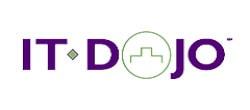JEX – Junos Enterprise Switching using Enhanced Layer 2 Software
This two-day course provides students with intermediate switching knowledge and configuration examples using Junos Enhanced Layer 2 Software. This course includes an overview of switching concepts and operations, virtual LANs (VLANs), the Spanning Tree Protocol (STP), port and device security features, and high availability (HA) features. Through demonstrations and hands-on labs, students will gain experience in configuring and monitoring the Junos OS and in monitoring device operations. This course uses Juniper Networks EX Series Ethernet Switches for the hands-on component, but the lab environment does not preclude the course from being applicable to other Juniper hardware platforms running the Junos OS. This course is based on Junos OS Release 13.2X51-D20.3.
Provider Information
IT Dojo
4176 S Plaza Trail
Suite 207
Virginia Beach, VA 23452
Course Overview
Students should have basic networking knowledge and an understanding of the Open Systems Interconnection (OSI) reference model and the TCP/IP protocol suite. Students should also attend the Introduction to the Junos Operating System (IJOS) course prior to attending this class.
4176 S Plaza Trail
Suite 207
Virginia Beach, VA 23452
- Providers
- Courses
- Course and Provider Quantity
Learning Objectives
After successfully completing this course, you should be able to: List the benefits of implementing switched LANs. Describe transparent bridging concepts and operations. Describe terms and design considerations for switched LANs. List enterprise platforms that support Layer 2 switching. Configure interfaces for Layer 2 switching operations. Display and interpret the Ethernet switching table. Explain the concept of a VLAN. Describe access and trunk port modes. Configure and monitor VLANs. Describe voice VLAN and native VLAN concepts. Explain inter-VLAN routing operations. Configure and monitor inter-VLAN routing. Explain when a spanning tree is required. Describe STP and Rapid Spanning Tree Protocol (RSTP) operations. List some advantages of using RSTP over STP. Configure and monitor RSTP. Describe the bridge protocol data unit (BPDU), loop, and root protection features. Configure and monitor the BPDU, loop, and root protection features. List and describe various port security features. Configure and monitor port security features. Describe the storm control feature. Configure and monitor storm control. Describe firewall filter support for EX Series Ethernet Switches. Implement and monitor the effects of a firewall filter. List and describe some features that promote high availability. Configure and monitor high availability features. Describe the basic concepts and operational details of a virtual chassis. Implement a virtual chassis with multiple EX4300 switches. Explain the concepts of Ethernet Ring Protection Switching (ERPS). Configure and monitor ERPS. Explain the concepts of Multiple Spanning Tree Protocol (MSTP). Configure and monitor MSTP.
Framework Connections
The materials within this course focus on the NICE Framework Task, Knowledge, and Skill statements identified within the indicated NICE Framework component(s):
Work Roles
Feedback
If you would like to provide feedback on this course, please e-mail the NICCS team at NICCS@mail.cisa.dhs.gov. Please keep in mind that NICCS does not own this course or accept payment for course entry. If you have questions related to the details of this course, such as cost, prerequisites, how to register, etc., please contact the course training provider directly. You can find course training provider contact information by following the link that says “Visit course page for more information...” on this page.
